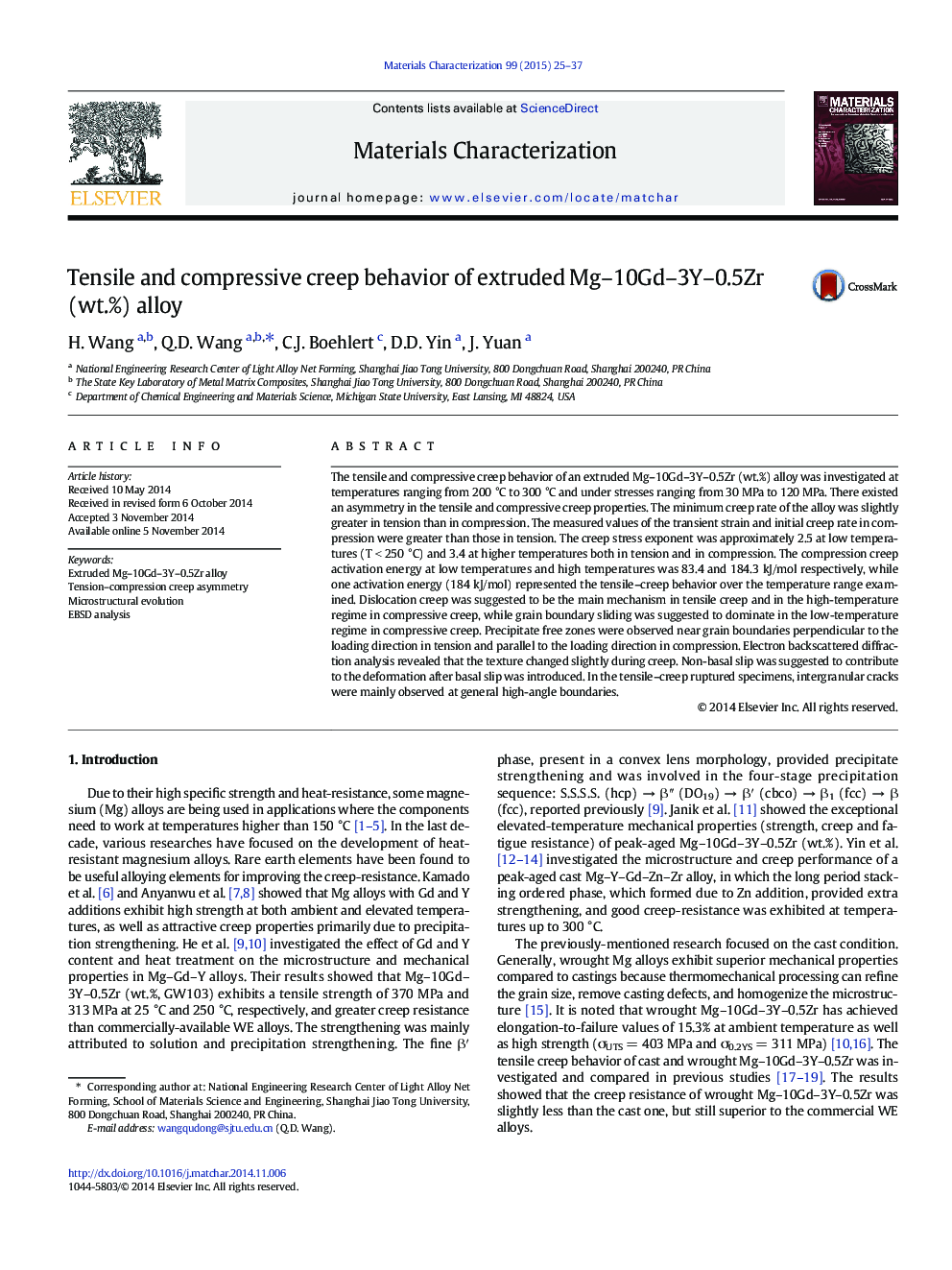| Article ID | Journal | Published Year | Pages | File Type |
|---|---|---|---|---|
| 7970500 | Materials Characterization | 2015 | 13 Pages |
Abstract
The tensile and compressive creep behavior of an extruded Mg-10Gd-3Y-0.5Zr (wt.%) alloy was investigated at temperatures ranging from 200 °C to 300 °C and under stresses ranging from 30 MPa to 120 MPa. There existed an asymmetry in the tensile and compressive creep properties. The minimum creep rate of the alloy was slightly greater in tension than in compression. The measured values of the transient strain and initial creep rate in compression were greater than those in tension. The creep stress exponent was approximately 2.5 at low temperatures (T < 250 °C) and 3.4 at higher temperatures both in tension and in compression. The compression creep activation energy at low temperatures and high temperatures was 83.4 and 184.3 kJ/mol respectively, while one activation energy (184 kJ/mol) represented the tensile-creep behavior over the temperature range examined. Dislocation creep was suggested to be the main mechanism in tensile creep and in the high-temperature regime in compressive creep, while grain boundary sliding was suggested to dominate in the low-temperature regime in compressive creep. Precipitate free zones were observed near grain boundaries perpendicular to the loading direction in tension and parallel to the loading direction in compression. Electron backscattered diffraction analysis revealed that the texture changed slightly during creep. Non-basal slip was suggested to contribute to the deformation after basal slip was introduced. In the tensile-creep ruptured specimens, intergranular cracks were mainly observed at general high-angle boundaries.
Related Topics
Physical Sciences and Engineering
Materials Science
Materials Science (General)
Authors
H. Wang, Q.D. Wang, C.J. Boehlert, D.D. Yin, J. Yuan,
